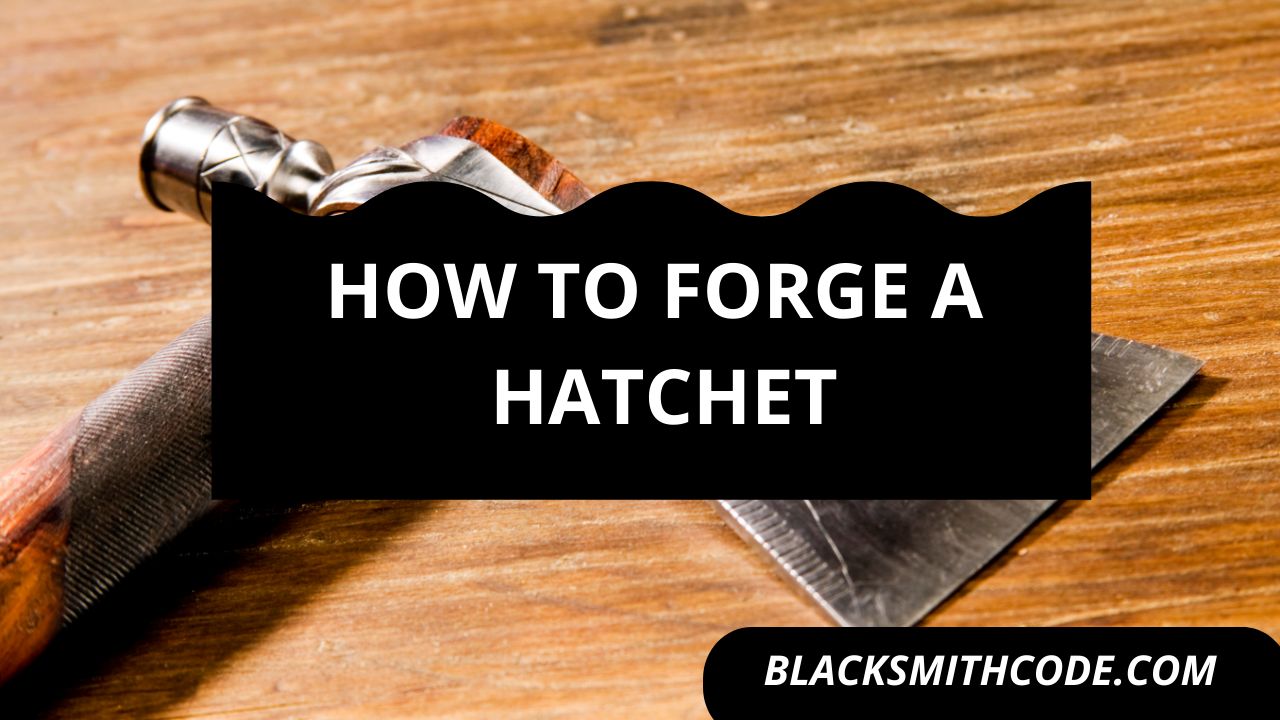Are you aware that you can spend less on buying tools by forging your tools? Chisels are one of the essential tools in the blacksmithing profession. So, there is a high value in learning how to forge a chisel.
One of the fundamental reasons for blacksmithing is to help them forge tools. Forging your blacksmithing tools is a priceless asset. It will help you make the tools precisely the way you want it.
Likewise, it will also save you some cost of purchasing tools. Chisels are an essential part of blacksmithing tools. They have diverse and crucial functionalities.
Here are simple steps on how to forge a chisel. The steps below will serve as a practice guide if you intend to learn how to form a chisel.
Instructions on How to Forge a Chisel
Step 1: Choose Your Material
For any blacksmithing procedure, it is essential to figure out what material you want to use. Gather the elements and keep them close. Also, ensure that all your tools are in place and well-positioned.
Pro Tip
The type of steel material is your choice. Scrap metals, calcium-manganese 9260 alloy steel spring or a coil ring should be suitable.
Step 2: Heat and Prepare Your Material
First off, you should be aware that your steel will be blazing hot throughout the entire process. The heating at this point is to roll your materials and form them into a suitable shape for the rest of the process.
Quick Note
Heat the material to a blunt. If you are using a spring, you can chunk it off and straighten it. However, if you use other metals, roll it up until you achieve the thickness of a chisel.
Step 3: Cutting
Once you are done with the straightening, cut the metal to suitable size and length. You can also create the socket at this point.
Note that it is essential to choose your cutting technique wisely. Getting a proper cut will improve your output while forging a chisel.
Step 4: Annealing
This step aims to ease the grinding process of the chisel. Relax the steel by cooling it as slowly as possible. The drop in temperature from its nonmagnetic heat will relax the steel.
Quick Steps
- Raise the temperature of the metal to a standard point.
- Immerse it in a container of perlite or vermiculite. Either of the two substances will serve as an insulator to aid the process.
Step 5: Grinding
Grinding is not tricky since the shape of a chisel is not complicated. You can either make use of a belt grinder or files for your grinding process. But a belt grinder will be neater and faster.
Ensure that you don’t leave any sharp edges to avoid cracking during heat treatment. Before you start the grinding process, ensure that you have the chisel geometry in your head already.
Also, take your time. It is best to go slow and steady with this step.
Step 6: Hardening and Tempering
This process follows you are through with your grinding process. Here, the chisel will gather all the needed durability and hardness to fit its functionality.
Step 7: Secondary Beveling
This step involves sharpening the tip of the chisel. It would be best if you grind the edges and edge of the chisel using a grinder. The edges of the blade should not be sharp.
Note
They should only be blunt so as not to cut your hand when using it. The tip of the chisel should be sharp. It does not have to be as sharp as a nail but should be severe enough to chop out woods.
Step 8: Finishing
The finishing requires you to make the chisel look presentable. It also requires making the surface of the chisel smooth. To perform the finishing act, you will make use of a wire brush.
You will make use of the wire brush to scrub the surface of the chisel. This process will enable the chisel to be smooth and also makes it shine. In replacement for a wire brush, you can also make use of an automated wire brush machine.
Step 9: Adding The Handle
You can add the handle to the chisel when all other measures have been completed. The handle can either be metallic, wooden, or made of rubber. Whatever the handle is made of, you should make sure the handle is sturdy, one to withstand the beating.
FAQs on How to Forge a Chisel
Question
Can you forge a chisel from scrap metals?
You can forge a chisel from a bar of metal, which most times are steel. As long as the scrap metal is in the form of a bar or you can forge it to become a bar, it can be used for producing a chisel.
Be it a scrap metal or a useful metal, and once it takes a form that you can forge, it will forge a chisel.
Question
Are there different types of chisel?
There are several types of chisels. The different types of chisel have there are of specialization. Every chisel can perform the general function of cutting through metals and woods, but the different types of chisels have one specific purpose they are designed to do.
Question
What is a hot chisel?
A hot chisel is a type of chisel used in cutting hot metals to make them soft. The hot chisel is as useful as the cold chisel, especially in blacksmithing. Cutting hot metals might not be easy, but with the use of hot chisels, it ends up being easy.
Video on How to Forge a Chisel
Precautions
There are several precautions to take when forging your chisel. Some of the precautions are stated below.
- It would be best if you always were cautious when handling hot metals.
- Making use of appropriate tools should be one of your obligations.
- You should always make sure you put on protective clothing.
- It would be best if you abstained from using damaged tools.





